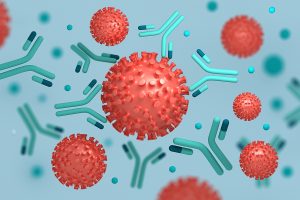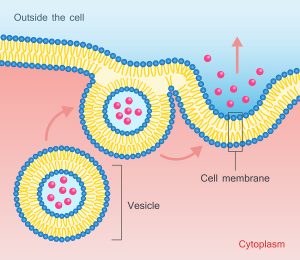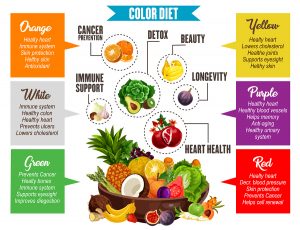A new Federal Nutrition Research Advisory Group stated that poor diets threaten Americans and cause diseases. More than 500,000 people in the US are dying every year because of poor nutrition. 46% of adults have unhealthy diets; but children have even more, namely 56%. In 1979 the US healthcare cost was 6.9% of the gross domestic product. Compare this to 2018 when the US healthcare cost was 17.7% of the gross domestic product.
The Federal Nutrition Research Advisory Group states: “Poor diets lead to a harsh cycle of lower academic achievement in school, lost productivity at work, increased chronic disease risk, increased out-of-pocket health costs, and poverty for the most vulnerable Americans.”
You can improve your diet quality
When you start cutting out junk food and other processed foods, the quality of your food intake is improving. Eat more vegetables, and fruit. Eat wild salmon, which provides omega-3 fatty acids. Do not consume vegetable oils like soybean oil, canola oil, safflower oil, corn oil and grapeseed oil. They all contain omega-6 fatty acids. Omega-6 fatty acids are essential fatty acids and they convert mainly into energy. But the problem is that our western diet contains too many omega-6 fatty acids. Omega-6 fatty acids can convert into arachidonic acid, which causes inflammation. This in turn can cause heart attacks and strokes on the one hand and arthritis on the other. Use cold-pressed extra virgin olive oil instead for cooking and on salads.
How does poor quality food affect your health?
Researchers are aware of trans fats causing Alzheimer’s disease, heart attacks and strokes for a long time. They increase the bad LDL cholesterol, decrease the good HDL cholesterol. Rancid oils contain free radicals that oxidize LDL cholesterol and attack the lining of your arteries through small dense LDL cholesterol. The FDA has started to initiate steps in 2015 to make the use of trans-fats in the food industry illegal. Completion of this in the US occurs in early 2020.
Japanese trans-fat study (Alzheimer’s disease)
This Japanese study followed 1,628 Japanese community residents (men and women) for about 10 years. Researchers used the typical trans fatty acid, elaidic acid to monitor the accumulation of trans fats in patients. This is possible with a simple blood test, which serves as a marker for industrial trans fats. 377 participants developed dementia (247 Alzheimer’s disease and 102 vascular dementia). Based on the blood elaidic acid levels earlier in the study individuals with higher trans-fat levels were more likely to develop Alzheimer’s disease as the study progressed. Patients whose trans-fat blood levels were in the higher range were 50% to 75% more likely to develop Alzheimer’s disease or dementia.
Diseases caused by poor lifestyle habits
It is important to review the diseases that shorten life expectancy due to having poor lifestyle habits. Note that it is not only your dietary habits that determine this, but in addition, several lifestyle factors.
Cardiovascular disease
Smoking, lack of regular exercise and poor eating habits result in being overweight or developing obesity. All of these are risks with LDL cholesterol elevation and HDL cholesterol lowering that leads to heart attacks and strokes. Here is a study that shows how life is shortened after a heart attack. It is clear from this how important it is to give up all of the poor lifestyle habits to avoid this from happening.
Cancer
90% of lung cancers are the result of cigarette smoking. Heavy drinking can contribute and also lead to cancer of the liver, esophageal cancer, cancer of mouth and throat and cancer of the breasts in women. In addition, consuming too much alcohol causes cancer of the colon and rectum in both sexes.
Diabetes
There are a variety of risk factors causing diabetes. Obesity, a lack of exercise, a bad diet with too much carbohydrates and the aging process are what contributes to the development of type 2 diabetes.
We see again that it is largely lifestyle issues that drive the onset of this disease. People who have developed diabetes need to control their blood sugar very closely to avoid complications of diabetes. This includes making healthier choices.
Otherwise complications of diabetes are diabetic nephropathy, blindness from macular degeneration of the cornea, heart attacks, stroke and diabetic neuropathy. In addition, vascular complications also include artery occlusions in the lower extremities with frequent foot or below knee amputations.
Chronic diseases
Often chronic diseases develop when there is generalized development of inflammation. COPD, chronic kidney disease and arthritis are examples of such conditions. In addition, Alzheimer’s disease, arthritis, asthma, Crohn’s disease, cystic fibrosis and diabetes belong into this category. All of these chronic diseases have in common that cytokines produce inflammation in the body. This keeps the chronic disease going and makes it more difficult to cure. When the person with a chronic disease makes poor lifestyle choices, the inflammation just becomes more chronic.
Smoking is one of the factors that makes chronic inflammation more chronic. Having a body mass index above 25.0 (being overweight) and above 30.0 (obesity) also creates more inflammation in the body. Excessive alcohol intake damages body cells and releases free radicals. These in turn cause inflammation and make the chronic disease more difficult to treat. An unhealthy diet tends to raise the bad LDL cholesterol, introduces pesticides and other chemicals into your system and adds to chronic inflammation. Finally, a lack of exercise is not contributing to a healthy circulation and lowers the protective HDL cholesterol, paving the way for heart attacks and strokes.
Conclusion
A new Federal Nutrition Research Advisory Group has been formed, which noted that many Americans follow very poor diets. 46% of adults in the US have unhealthy diets; but children have even more poor diets, namely 56%. This is of concern, because in time this causes a variety of diseases discussed here. Instead of just treating the symptoms of these diseases, it is important to improve the diet people are on, which prevents the development of these diseases. A well-balanced diet not only prevents diseases, it also leads to longevity and healthy aging without Alzheimer’s disease. Take care of what you eat, and be sure it is healthy!
Part of this text was published before here.















